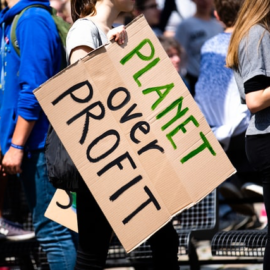
Don’t tell me not to pollute. Suck it up like we have to do.
Louisiana has joined Texas in asking a federal appeals court to throw out a new Environmental Protection Agency plan implementing its own rules to cut ozone-causing air pollution in the state that is drifting across state lines. The revised EPA “Good Neighbor Plan” filed in the Federal Register on March 15 is aimed at reducing emissions in 23 states that cross state lines and contribute to the formation of smog, that brown haze in the air that includes ozone-causing chemicals and smoke. Part of the plan rejects an implementation strategy filed by the Louisiana Department of Environmental Quality in 2019.
nola.com
I would cost a billion but the social costs are worth it.
EPA says the cost of achieving the expected reduction in all the states would total about $1.1 billion by 2026. But it said the reductions would reduce premature deaths resulting from ozone by 1,000, cut hospital and emergency room visits by more than 2,000, reduce asthma symptom cases by 1.3 million, and reduce school absence days by 470,000. The reductions target several major sources of nitrogen oxide compounds, including electric power plants, kilns used in cement and cement product manufacturing, some furnaces in iron and steel mills, and furnaces in glass and glass product manufacturing facilities. Also targeted are boilers used in a variety of industries, including basic chemical manufacturing, petroleum and coal products manufacturing, pulp, paper and paperboard mills, and solid waste combustors and incinerators. It also targets internal combustion engines used in pipeline transportation of natural gas. Several of those emission sources are targeted in Louisiana, with emissions crossing the Louisiana-Texas border and increasing ozone levels in Galveston County, Texas.
The EPA is looking at a reduction by a third.
EPA has recommended that an expected 9,363 tons of nitrogen oxide emissions in the state in 2023 during the May 1-Oct. 30 ozone season be reduced to 6,370 tons by 2026 and 3,739 tons by 2029. In turning down the state’s plan, EPA questioned some of the calculations used for determining how much pollution crossed borders, and found flaws with its contention that nitrogen oxide emissions were “consistent and persistent” through no fault of the state’s regulations. It also found the state’s evaluation of additional emission control opportunities to be insufficient while questioning its assessment of seasonal weather patterns and surface wind directions. “The state included no permanent and enforceable controls in its (implementation plan) submission,” the EPA filing said.
The AG immediately rain to their favorite court.
On March 16, the day after the Federal Register notice of the plan disapproval was published, Louisiana Attorney General Jeff Landry and the DEQ filed a motion with the U.S. 5th Circuit Court of Appeals in New Orleans asking the court to review it. That’s a routine process for challenging rules that is built into the federal Clean Air Act. The state has not yet filed arguments with the court explaining why it wants the rule overturned. “It’s a legal challenge to the EPA’s rejection of Louisiana’s ozone transportation SIP (state implementation plan),” said Gregory Langley, a spokesperson for the environmental agency. “I cannot comment on the active litigation.” EPA has already asked the 5th Circuit to transfer both the Texas and Louisiana challenges to the District of Columbia Circuit Court of Appeals. Both of the states have opposed that request.
Ozone is not a good export from a state.
Ozone is an oxidant that can damage molecules within the body, especially in the lungs, and especially in children, the elderly and those affected by asthma. It is formed through the chemical reaction in the air in the presence of sunlight of nitrogen oxides and volatile organic compounds emitted by cars, power plants, and other industrial facilities.
To file a suit with out documentation. That is the Louisiana way I guess.



